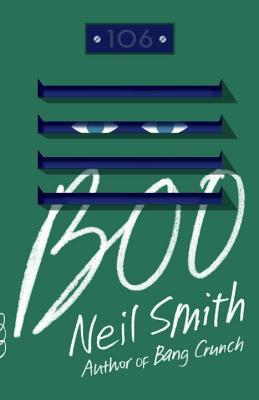As part of the Vancouver Sun’s book club, I’ve been discussing Boo, a new novel by Neil Smith. It’s about Oliver “Boo” Dalrymple, a 13-year-old boy who narrates the book from the afterlife. The jacket blurb’s proclamation that this is “Lord of the Flies without pig slaughter and privation.”
Read more: http://www.vancouversun.com/news/book+club+year+protagonist+quest+meaning/11151629/story.html#ixzz3fr3fwphy
One of my favourite discussions was about the 1970s cultural references in the novel. Here’s what I said:
Quote: Until our conversation last week, I did not pick up on the fact that the book is set in the 1970s because there are so many hipster trends today that allude to that period. It’s obvious now, and so overt, that it’s embarrassing to admit that I glazed over this aspect of the novel. As I started compiling a list of the cultural references, I couldn’t stop so this is not an exhaustive list, just want sprang to mind.
First off, I loved the Napolean-Dynamite visual I got when reading about Boo or Johnny wearing the white and blue striped gym socks and sweat bands. That alone brought levity to the underlying story of two boys dead in a school shooting. The peace symbol and style of clothes really do set the story in the 70s for me but Town/Heaven is presented as Salvation Army so, again, I didn’t initially understand the setting to be the 1970s. My assumption then, since there are no computers or video games, is that Town’s culture is that of America in current day.
The clothes especially made me laugh and Boo’s criticism of the cashmere sweater and egotism of 13-year-old girls reminded me of that all-about-me phase. It’s funny, especially, if the 70s was the Me decade, to end up in town with generations of 13 year old Americans. You would not feel so unique, which is maybe why some townies identify as gommers, or portal seekers, or find other ways of segmenting themselves off.
The other prominent 70s references for me were the Hardy Boys references, especially the building named Frank and Joe, the music references, and I immediately thought of the do-good council as the Brady Bunch.
I wonder if there are no cars in Town because 13 year olds can’t drive, or if that’s a reference to the oil crisis? Likely the former. And I don’t know enough about the history of the periodic table but there’s obviously an interesting study of those elements and their function within the storytelling.
What I don’t recall are references to Star Wars. But Boo is certainly aware of the starscape and Zig only changes it on occasion. I wonder for people who saw the moon landing first hand, if it was underwhelming. It’s cool, but there’s nothing there. Was that a letdown and made people wonder about heaven? If you imagined the moon as this great place then saw its pocked surface, did you question what you’d imagined about heaven?
The mental health building, Johnny’s behaviour, and the sense of being in purgatory or sentenced to 50 years in town reminded me of One Flew Over the Cuckoo’s Nest. There were several places in the novel when I wondered who the crazy actually was.
You can read the full discussion among all the book club members here: http://www.vancouversun.com/entertainment/books/book+club+References+1970s+abound+afterlife+novel/11132081/story.html
Boo was a fascinating novel and an interesting philosophical experiment on what the afterlife holds for us.
Boo by Neil Smith
published by Knopf Canada
